Loading
Archives of Dentistry
ISSN: 2689-6222
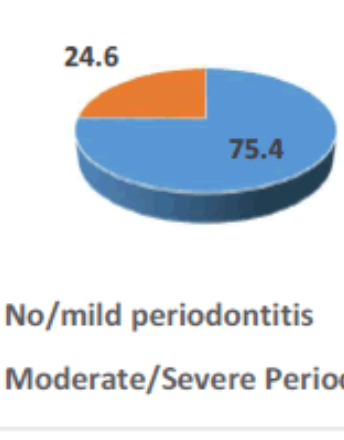
2021
Volume 3, Issue 1, p1-31
Articles published in this issue are Open Access and licensed under Creative Commons Attribution License (CC BY NC) where the readers can reuse, download, distribute the article in whole or part by mentioning proper credits to the authors.
Impact of Age on Prognostic Treatment Outcomes Among Oral Squamous Cell Carcinoma Patients: Evidence from Sri Lanka
Irosha Perera, N.S.S. Jayasuriya, H.G.H. Jinadasa, K.H.B. Kodituwakku, S. Kandegedara, A.M. Attygalla
Improving treatment outcomes for oral cancer patients is underpinned by their disease-free survival and overall survival while ensuring sufficient levels of quality of life [1,2]. There is research evidence to support surgical treatment with or without adjuvant radiotherapy is superior as compared to curative radiotherapy with or without
Arch Dent, 2021, Volume 3, Issue 1, p1-7 | DOI: 10.33696/dentistry.3.016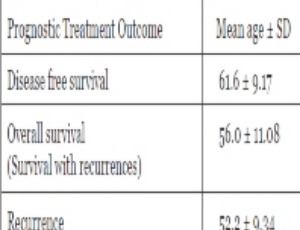
Respiratory Protection - Even in the Bigger Picture, it is Often the Smallest Details that Take Your Breath Away
Ram Prakash, Uday Kumar Digumarthi
It is surprising and even endearing in a way that we, as humans, live life looking ahead with hope, always believing in a better tomorrow, sometimes being oblivious to risks and dangers, often telling ourselves that bad things probably only happen to others and that the threats mentioned are in reality not as bad as they seem [1]. As health
Arch Dent, 2021, Volume 3, Issue 1, p8-10 | DOI: 10.33696/dentistry.3.017
The Role of Selected Habits, Periodontal Disease and Oral Hygiene Status on the Occurrence and Prognosis of Oral Mucosal Lesions
Sharika Gunathilake, Anil Welikanna, Suresh Sinnathamby, DSC Colombathanthri, GH Sueneth Chandima, Irosha Perera, Manosha L. Perera, Nadeena Jayasuriya, Sakuntha Ratnapreya
Patients with an array of benign oral mucosal diseases comprising fibro-epithelial polyps, lipomas and lichen planus commonly present to Oral & Maxillofacial units. While managing their specific conditions, it is important to assess for their risk habits such as betel chewing which is associated with a high burden of periodontal disease as
Arch Dent, 2021, Volume 3, Issue 1, p11-18 | DOI: 10.33696/dentistry.3.018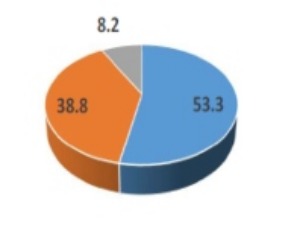
Scalable 3D Screen Printing Technology in Pharmaceutical Manufacturing - High Degree of Freedom in Terms of Drug Choice
Achim Schneeberger, Stefan Seyferth, Dagmar Fischer
Additive manufacturing has the potential to revolutionize the pharmaceutical industry, enabling the production of customized drugs for the mass market. However, concerns over scalability, low mechanical resistance, low printing resolution and limited material choices have so far hindered the practical application of current 3D printing (3DP)
Arch Dent, 2021, Volume 3, Issue 1, p19-21 | DOI: 10.33696/dentistry.3.019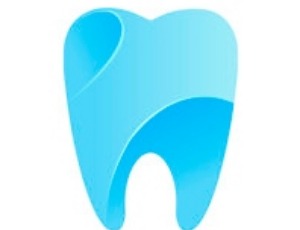
Socio-demographic Determinants, Patterns, and Treatment Outcomes of Dental Trauma Patients Treated at a Restorative Dentistry Unit, National Dental Teaching Hospital (NDTH), Sri Lanka
Dilhan Rupasinghe, Irosha Perera, Vasantha Sivaguru, Chathurani Rupasinghe
Traumatic dental injury (TDI) impacts the teeth and/or other hard and soft tissues within and around the mouth and oral cavity region [1]. TDI are very common across the globe leading to 85% of patients having injuries in the oral region [2] which was revealed by a meta-analysis conducted in 2018 [3]. TDIs are frequently presented as serious
Arch Dent, 2021, Volume 3, Issue 1, p22-31 | DOI: 10.33696/dentistry.3.020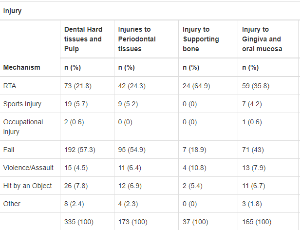
Recommended Articles
COVID-19 Clinical Research
While the global COVID-19 pandemic has challenged the entire humanity and health systems, it also triggered researchers to urgently perform clinical trials to assess the safety and efficacy of many agents and modalities to combat COVID-19. As of April 22, over 650 clinical studies have been registered both in USA and internationally. Results from these studies are also coming at a brisk pace in this unprecedented emergency.
STARTTS Capoeira Angola Project Bantu: Combining Alternative Therapeutic Intervention with Sport for Traumatized Young Refugees: On the Way to Recovery
During the last decade, the world experienced an incredible increase in displaced populations; a staggering 70.8 million, which has been a direct outcome of war and human rights violations. This figure includes 25.9 million having been identified as refugees, and 51% constituting children below 18 years of age which has been documented as the highest figure in a decade.
Dexamethasone: The First Drug to be Shown to Decrease Mortality in Critically Ill Patients with COVID-19
The precise role of corticosteroids for treatment of coronavirus disease 2019 (COVID-19) is unclear due to lack of randomized trials.
Long-Term Use of Oral Bisphosphonates and Fracture Risk in Men with Traumatic Spinal Cord Injury
Lower extremity fractures in individuals with a spinal cord injury (SCI) cause significant morbidity [1] and contribute to excess mortality [2]. Early identification of persons at highest risk for fracture is possible using bone mineral density (BMD) testing by dual-energy X-ray absorptiometry (DXA) imaging
COVID-19 Disease and SARS-CoV-2 Vaccination in Patients with Cancer
Since the declaration of COVID-19 as a pandemic in March 2020 [1], there have been more than 100 million reported cases of COVID-19 worldwide and more than 2.1 million deaths [2].
COVID-19 and the Health of Illicit Substance Users: Preliminary Analysis from Illicit Drug Transaction Data
While much attention has been given to how COVID-19 patients are treated (or fail to be treated), the impact of the pandemic on illicit drug users remains largely undiscussed
COVID-19 Rapid Diagnostic Test Results and their Associations with Certain Factors Among the Residents of Balochistan
This paper analyses any possible association of various factors like gender, last COVID-19 PCR test results, BCG Vaccination, Seasonal Flu vaccination, occupation and confirmed case contact history with COVID-19 RDT results of the participants.
COVID-19 Delays Presentation and Management of Acute Coronary Syndrome
The COVID-19 pandemic started at the end of 2019 and remains carrying a health threat and significant economic consequences. Over the last two years, COVID-19 has been the main Public Health issue, and has impacted regular healthcare systems, with significant build-up of waiting lists and delay in optimum management of other serious medical conditions including heart diseases and cancer.
Chronic Oral Mucosal Trauma and Oral Cancer: A Series of Cases
The dentist is often the first person who has the opportunity to detect mucosal alterations, such as ulcerations or white and red lesions in the oral cavity. Early diagnosis and proper management can prevent unfavorable outcomes in these patients. Indeed, chronic mucosal trauma resulting from sharp teeth and faulty restorations has
Perivascular Adipose Tissue: Quantitative Analysis by Morphometry and Stereology in Rodents
Virtually all arteries, except brain arteries, are surrounded by a significant amount of perivascular adipose tissue (PVAT). It was thought that the PVAT was only responsible for the mechanical protection of vessels against neighboring tissues during contraction.
The Impact of the COVID-19 Pandemic Lockdown Measures on Diabetic Retinopathy Services in the East Kent Area of the United Kingdom - A Special Focus on the Pregnant Diabetic
The COVID-19 pandemic has shaped activities across almost all human endeavours. Changes are still ongoing to accommodate all the challenges it poses. The healthcare sector, working closely with governments of nations and regulatory agencies, has helped to control the impact of this highly contagious virus.
Impact of Age on Prognostic Treatment Outcomes Among Oral Squamous Cell Carcinoma Patients: Evidence from Sri Lanka
Improving treatment outcomes for oral cancer patients is underpinned by their disease-free survival and overall survival while ensuring sufficient levels of quality of life [1,2]. There is research evidence to support surgical treatment with or without adjuvant radiotherapy is superior as compared to curative radiotherapy with or without
Microptofluidic Technology for Biodiagnostics of Traumatic Brain Injury: A Commentary
Traumatic brain injury (TBI) is a leading cause of death and neurological disability worldwide with millions of people sustaining and living with its long-term effects []. TBI is often categorized as mild, moderate and severe with primary injuries separated as either focal or diffuse, with the latter including contusions, intracranial hematomas and brain herniation.
The Role of Selected Habits, Periodontal Disease and Oral Hygiene Status on the Occurrence and Prognosis of Oral Mucosal Lesions
Patients with an array of benign oral mucosal diseases comprising fibro-epithelial polyps, lipomas and lichen planus commonly present to Oral & Maxillofacial units. While managing their specific conditions, it is important to assess for their risk habits such as betel chewing which is associated with a high burden of periodontal disease as
Socio-demographic Determinants, Patterns, and Treatment Outcomes of Dental Trauma Patients Treated at a Restorative Dentistry Unit, National Dental Teaching Hospital (NDTH), Sri Lanka
Traumatic dental injury (TDI) impacts the teeth and/or other hard and soft tissues within and around the mouth and oral cavity region [1]. TDI are very common across the globe leading to 85% of patients having injuries in the oral region [2] which was revealed by a meta-analysis conducted in 2018 [3]. TDIs are frequently presented as serious
Can Early Home administration of Azithromycin with Zinc Help Prevent Severe COVID-19 Disease Progression and Long-COVID?
The novel SARS-CoV-2 belongs to the Betacoronavirus family and contains a single-stranded positive-sense RNA genome. Similar to the two other coronaviruses, SARSCoV- 1 and MERS-CoV, SARS-CoV-2 is also likely to have originated in bats, which serve as established reservoirs for various pathogenic coronaviruses [1]. Although it is still unconfirmed, the most commonly admitted hypothesis suggests that SARS-CoV-2 is transmitted from bats to humans via an unidentified intermediate host species (zoonotic transmission).
Differential Fecal Microbiome Dysbiosis after Equivalent Traumatic Brain Injury in Aged Versus Young Adult Mice
Traumatic brain injury (TBI) has a bimodal age distribution with peak incidence at age 24 and age 65 with worse outcomes developing in aged populations
Prediction of Severity and Mortality in Acquired Thrombotic Thrombocytopenic Purpura (aTTP). Utility of Clinical-biological Scores
Acquired thrombotic thrombocytopenic purpura (aTTP) is a life-threatening thrombotic microangiopathy (TMA). It has an average annual prevalence of approximately 10 cases/million people and an annual incidence between 1.5 and 6.0 cases per million according to studies conducted in France, the United States, the United Kingdom, and Spain. The first episode of aTTP occurs mostly during adulthood (~90% of all aTTP cases), but some child and adolescent forms are also detected (~10% of cases).
Commentary on “Health-related Quality of Life and Posttraumatic Stress Disorder in Inpatients Injured in the Ludian Earthquake: A Longitudinal Study”
Posttraumatic stress disorder (PTSD) is a common psychiatric disorder after experiencing trauma exposure and characterized by at least one symptom from the four clusters: intrusion, avoidance, negative mood and cognitive alterations, as well as abnormal arousal and reactivity
COVID-19, the Immune System, and Neurological Damage
The Germ Theory of Disease was solidified in the 19th century by Louise Pasteur and Robert Koch. They systematically visualized, isolated, and quantified microscopic pathogens as causative agents of diseases and epidemics. Viruses are submicroscopic; therefore, they were discovered later as pathogens by indirect methods [1,2].
About Scientific Archives
Scientific Archives is a global publisher initiated with the mission of ensuring equal opportunity for accessing science to research community all over the world. Spreading research findings with great relevance to all channels without any barrier is our goal. We want to overcome the challenges of Open Access with ensured quality and transparency.
